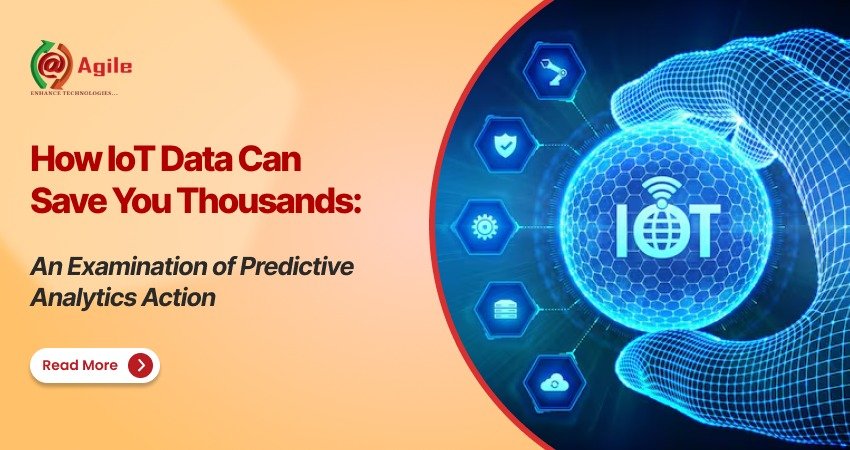
If your company has equipment that fails, requires repair, or has inefficient processes that drain the bottom line, IoT predictive analytics will allow you to save thousands, even millions, of dollars annually. Why?.
Previously, businesses had only the option of repairing things after they had broken down. When a thing breaks down, you would call an expert, place an order for components, and lose efficiency. If the delivery truck breaks down on the highway or the machine in the factory suddenly malfunctions, you pay to have it repaired, plus lose money in the form of lost production time.
Eventually, companies began preventive maintenance: repairing equipment on a schedule, even if it didn't need to be repaired. It reduced some risk, but it also had the issue of replacing parts that didn't need to be replaced. It was worse than equipment breaking, but it didn't do anything to help.
Predictive analytics is enabled by IoT and analytics. Algorithms can identify subtle trends—such as unusual vibrations in a motor, temperature changes in cold storage, or unusual fuel consumption in a fleet vehicle—based on real-time IoT sensor data. Such trends tend to indicate a problem before it becomes apparent.
This is light-years from waiting for equipment to break or employing a schedule-based method of maintenance. Companies can maintain their assets in peak condition.
Predictive analytics is the art of forecasting the future by the application of existing data. In IoT, it is applied as follows:
IoT sensor devices gather basic data like temperature, vibration, speed, humidity, energy use, GPS location, etc. They display the same.
This information is sent to a single location, typically the cloud, where it is gathered and stored.
Machine learning programs scan new data and compare it to past patterns. The system gets used to what is deemed "normal" and alerts against any variation. Projection
The analytics platform identifies likely outcomes—such as a bearing about to fail in a conveyor belt, or a refrigeration unit drifting out of safe temperature range.
The system gives a warning or a suggestion to the authorities. For example, "Replace pump X within the next 10 hours of operation to avoid a breakdown."
The method here is not only to avoid problems but to use assets more effectively—keeping maintenance costs down, minimizing downtime, and maximizing the life of assets.
Let's consider some sectors where predictive analytics in IoT is already making a real difference:
1. Production
The factories have to keep running. If the factories are closed for three hours, it will cost them hundreds of thousands of dollars. Predictive maintenance with IoT uses sensors to monitor vibrations, motor current, and temperature. The robot arm warns of unusual strain before a failure. This reduces repairs and allows the production lines to keep running.
2. Vehicle and Transport Management
Delivery trucks with IoT capabilities allow for real-time updates of engine condition, tire pressure, and fuel consumption. Predictive maintenance can identify which vehicle will need maintenance in the near future, avoiding on-road breakdowns. This avoids accidents due to mechanical breakdown.
Savings: Fewer surprise issues, lower towing expenses, quicker delivery times, and happier customers.
3. Cold Chain and Storage
For companies handling food, drugs, or chemicals, having strict temperature regulation is not negotiable. IoT sensors track storage temperatures 24/7. If a refrigeration system indicates aberrant temperature trends, predictive analytics can identify a possible compressor failure before it happens.
Savings: Not wasting food or vaccines in a shipment could mean a lot of money, hundreds of thousands of dollars.
These are the best means of predictive analytics in IoT that assist in making money: Less Downtime: Businesses lose money for each minute their machinery is idle. Predictions assist in preventing unexpected shutdowns.
Fewer Maintenance Expenses: Alter only when necessary, not beforehand, or thereafter.
Longer Asset Life: The equipment lasts longer when it is serviced on time.
Compliance and Safety: Avoiding accidents or contamination maintains legal matters on track and supports the brand.
Enhance Customer Experience: Timely delivery and frequent service foster trust between customers.
It may look daunting with all those large words, but predictive analytics is actually about making life simpler for other individuals. For the engineers, it removes the concern of fighting fires constantly. Rather than scrambling to repair unexpected breakdowns, they can schedule maintenance in peace.
A cargo of refrigerated foods arrives intact, a train arrives on time, and a product is released on schedule.
When we put faces to the numbers, predictive analytics is about safety and trust. Businesses have faith that their endeavors will not abruptly collapse. Employees have faith that they will not be held accountable for issues they cannot resolve. Customers have faith that commitments will be honored on schedule.
Overcoming Obstacles
IoT predictive analytics is not easy to deploy. Organizations can anticipate facing:
Data Overload: Millions of signals can overwhelm unless well-supported by analytics tools.
Integration Issues: Legacy systems may not integrate completely with IoT systems.
Start-up Expenses: Installing IoT infrastructures and analytics platforms incurs expenses at the beginning.
Change Management: Individuals resist the transition from centuries-old practices to fact-based decision-making.
But then consider the cost of downtime, spoilage, or accidents, and we can all understand that ROI is a no-brainer. Some organizations even experience a return in the first year that they use it.
The Future of Predictive Analytics in IoT
We are only now beginning to discover. Edge Computing is where information is processed locally in real time, with less dependence on the cloud. Self-Healing Systems employ IoT to not just anticipate issues but to heal themselves.
Picture a world where your equipment books its own maintenance, your delivery trucks navigate to prevent issues, and your warehouse rearranges itself to maintain the optimal conditions.
That's where IoT and predictive analytics come into play.
Leave a comment